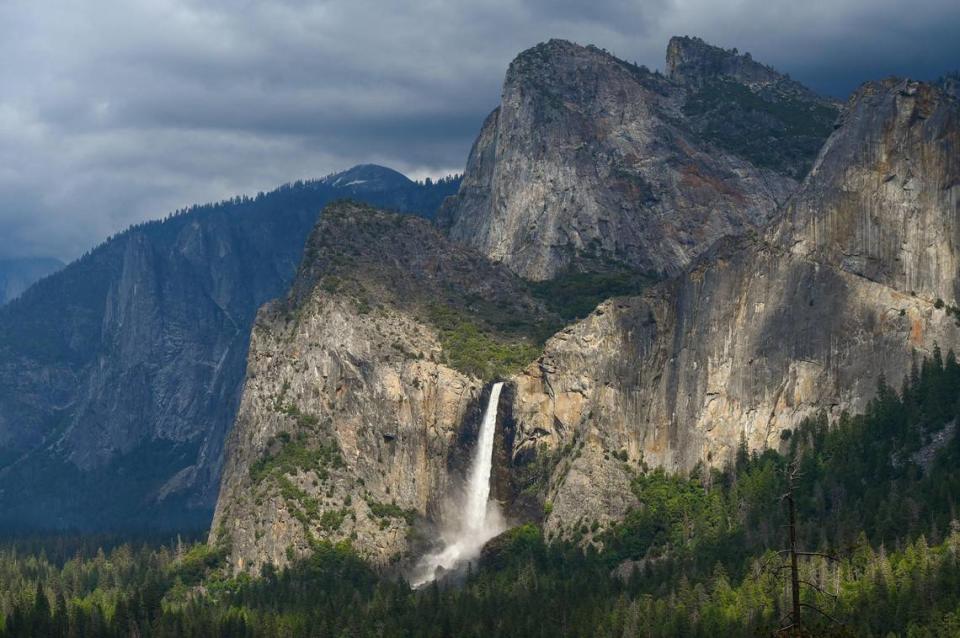Bureaucratic inefficiencies & rigid regulations have led to forest mismanagement | Opinion
A few weeks ago, under Yosemite’s iconic Half Dome, I joined my congressional colleagues on the House Committee on Natural Resources at the Curry Village Amphitheater for a field hearing on wildfires and forest management. The backdrop symbolized the health and beauty of America’s forests, but also stood testament to the urgency of the wildfire crisis that our state is all too familiar with.
During the hearing, we heard from tribal communities, farmers and outdoor enthusiasts who painted a grim picture of charred hometowns, declining air and water quality and diminished access to the cherished natural wonders right in our own backyard. The message was clear: We need improved forest management now.
Opinion
Beyond the obvious devastation caused by wildfires, these natural disasters also have a profound impact on air quality in the San Joaquin Valley. Living in cities located between mountain ranges, Valley residents suffer from prolonged exposure to the residue of wildfires. The American Lung Association labels many of our communities as having the nation’s worst air quality. One in every six children in the Valley grapples with asthma, and our elderly face heightened respiratory threats.
Last year, the U.S. Forest Service estimated that 36.3 million trees died in California in 2022 alone mainly due to drought and invasive disease. This alarming 282% increase in tree deaths from the year prior will have enormous consequences for the severity of wildfires in our state. While giant redwoods have evolved to be fire resistant, one of the main reasons these wildfires burn so hot is from excess fuel surrounding them — dead trees that aren’t being cleared.
Rooted in bureaucratic inefficiencies, rigid regulations and frivolous litigation, the intensifying cycle of tree deaths and the amplifying intensity of wildfires is eerily similar to the issues we face with California water. Just as politics and partisan divides have too often overshadowed common-sense solutions for our waterways, they’ve also hamstrung our efforts to combat wildfires effectively. Parallels between the bureaucratic obstacles in both forest and water management underline the urgent need for streamlined decision-making, especially when it comes to forest management.
We must improve our management of federal forest lands to reduce threats in the long-term while also taking concrete steps to combat wildfires when they do occur in the short-term.
Improving forest management and reducing wildfires requires action on several pressing issues. First, we must incentivize quicker fuel break development on both federal and private lands, which plays a critical role in slowing and stopping the spread of wildfire. These breaks not only naturally slow the progression of wildfires, they also ensure safer evacuation routes for residents and grant firefighters enhanced access, both from the ground and air.
The use of fire retardants is also a key component in combating wildfires when they occur. This important tool has proven its worth in reducing a fire’s rate of spread, intensity and associated dangers. Preserving forests and properties allows us to safeguard entire communities from the devastating loss of livelihoods, businesses and family homes.
The commitment to our wildland firefighters also demands attention. Our first responders put their lives on the line every day when they go to work, and I am extremely grateful for their commitment and sacrifice to protecting our communities. Their compensation, both in terms of fair wages and ensuring their safety, must be at the forefront of our legislative priorities.
Finally, the emphasis on public-private partnerships remains crucial. The collaborative resilience displayed by these partnerships can mean the difference between containment and catastrophe. By creating a coordinated wildfire response system, uniting efforts from federal to local levels, we can expedite fire containment and ensure that our approach is comprehensive and rooted in shared purpose.
We must embrace these strategies to realize our shared vision of clean air for Central Valley residents, safeguarded communities and preserved natural landscapes like Yosemite for our kids and grandkids to enjoy.
Republican Rep. David G. Valadao r epresents California’s 22nd Congressional District, which includes parts of Tulare, Kings and Kern counties.


